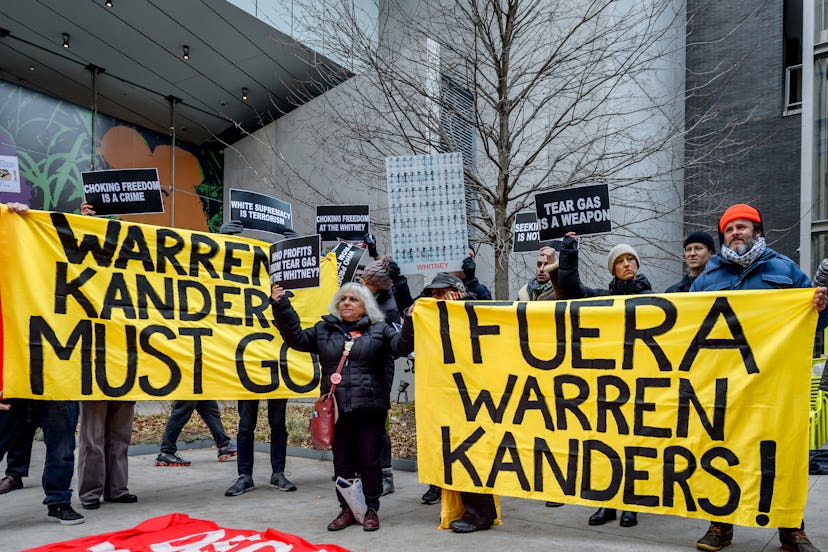Warren B. Kanders, the Whitney Museum’s Highly Controversial Vice Chairman, Has Finally Resigned From Its Board

After months and months of protest, Warren B. Kanders has stepped down from the Whitney Museum‘s board, the New York Times reported on Thursday morning. Until this week, Kanders was the board’s vice chairman—a post that’s proven highly controversial, given that Kanders is also the CEO and majority owner of Safariland, a manufacturer of weapons such as the tear gas used against migrant families attempting to cross the U.S.-Mexico border.
For two months now, the details about Kanders’s association with the corporation have been housed right within the museum’s walls, as a part of a work featured in the institution’s widely respected survey of contemporary American art. In recent years, the Whitney Biennial has becoming increasingly political, but for its 89th edition, Forensic Architecture kicked things up a notch. The London-based group dedicated its corner of the museum to educating visitors about how, through its ties to Kanders, the Whitney also has links to Safariland’s recent actions, from arming police forces against protesters—including those at Standing Rock and in Ferguson, Missouri—to supplying the Israeli Defense Force with bullets fired at protesters in Gaza.
After Hyperallergic published a report detailing Kanders ownership of Safariland last November, more than 100 of the museum’s staff members called for his resignation—a sentiment shared by the protesters who’ve now been gathering at the museum for months. By April, nearly three weeks before the 2019 biennial opened, more than half of its 75 participants followed suit, adding their names to an open letter signed by 120 art industry figures, such as the artist Barbara Kruger. Kanders—who has owned Safariland since 2012—responded via an open letter of his own. “I am not the problem the authors of the letter seek to solve,” he wrote in December, though commended “the bravery” of the authors nonetheless.
But in the months since, things have only looked worse for Kanders. The past week alone has brought news that one of the biennial’s performers, Nibia Pastrana Santiago, was among those who’ve been teargassed with Safariland products while protesting against Puerto Rico’s governor—another controversial figure who, over the course of the past 24 hours, has resigned from his post. Just days earlier, Forensic Architecture told Hyperallergic that it had discovered even more information linking Safariland to the violence in Gaza. And even before either of those developments, last week, eight artists requested that their work be removed from the biennial. (Four of them, including Korakrit Arunanondchai and Nicole Eisenman, explained their reasoning in a letter addressed to the show’s curators, which was published by Artforum.)
Kanders is back to letter-writing, too; on Thursday, he addressed his resignation in a letter to the museum’s board of trustees, which was published by the New York Times.
Related: Here’s One Way to Deal with Problematic Artworks, Like Sam Durant’s Scaffold: Burn Them